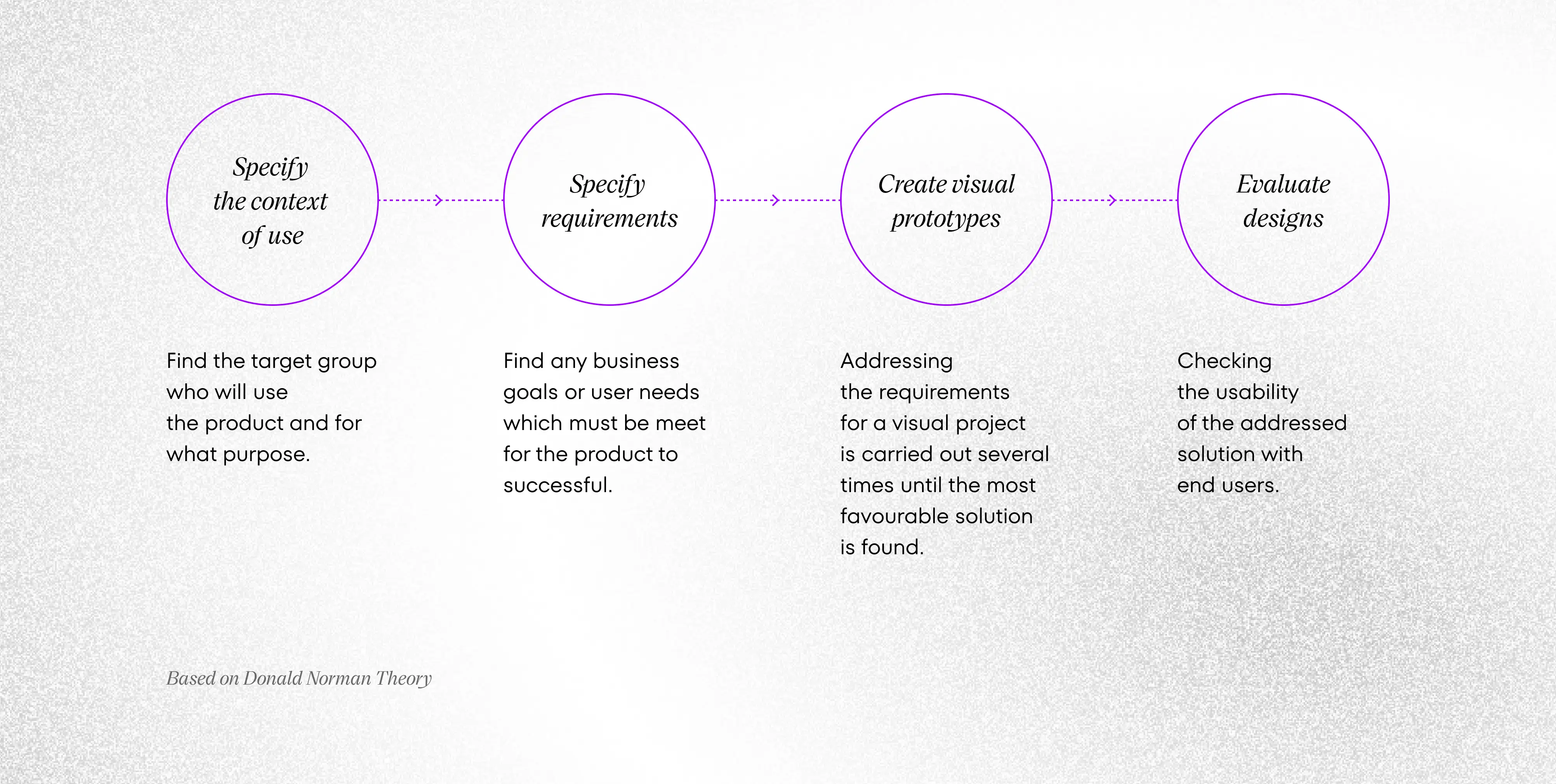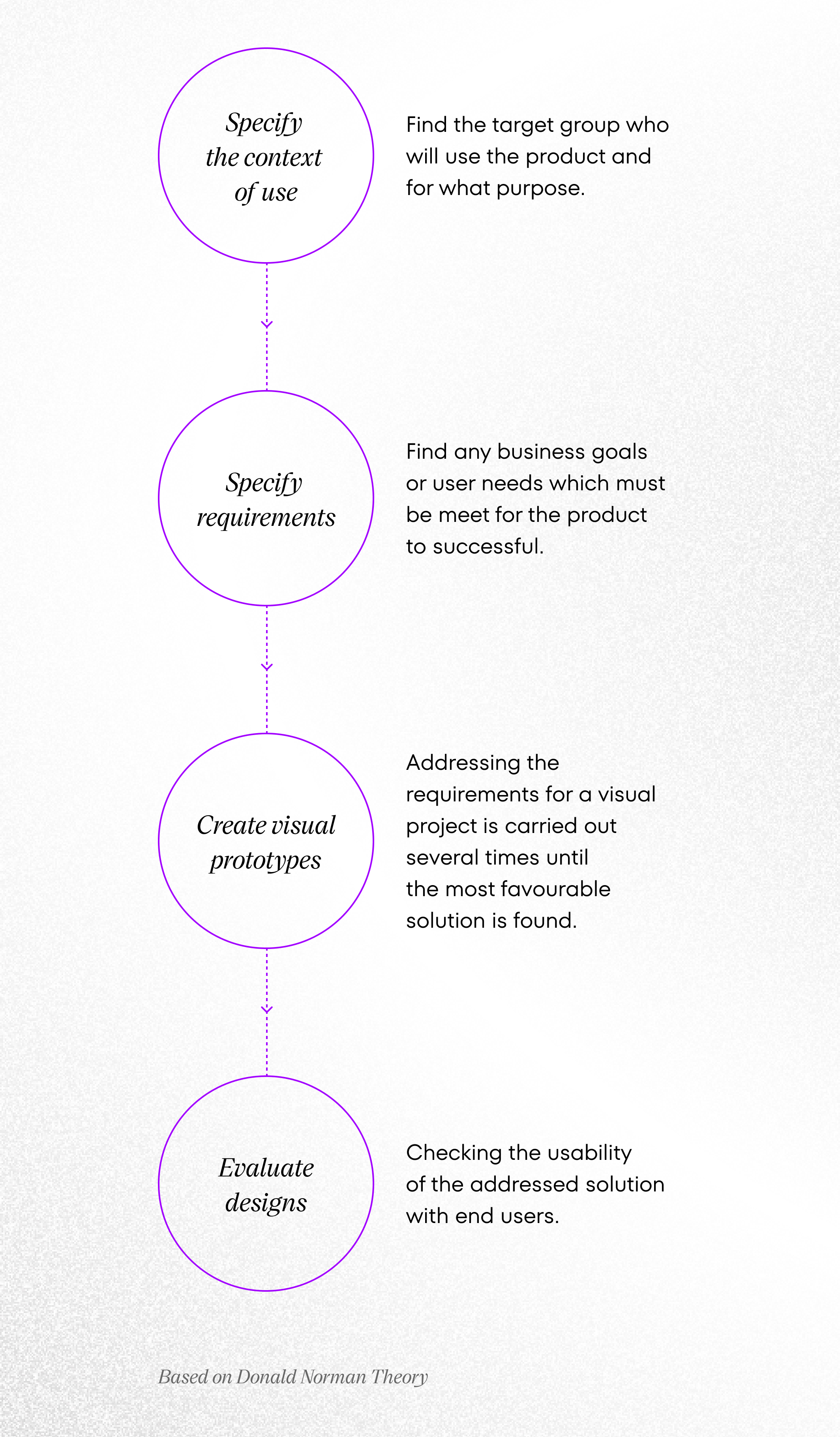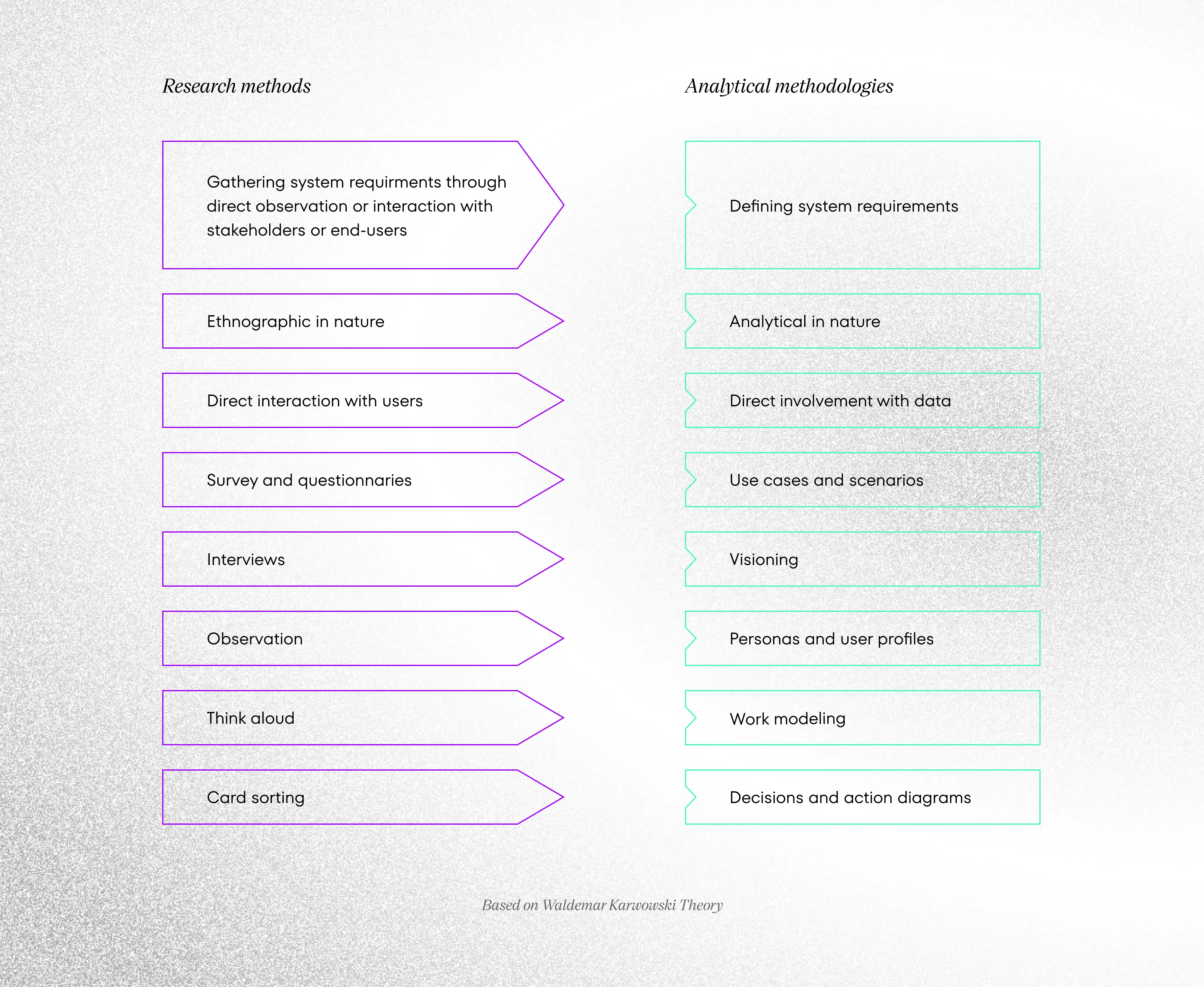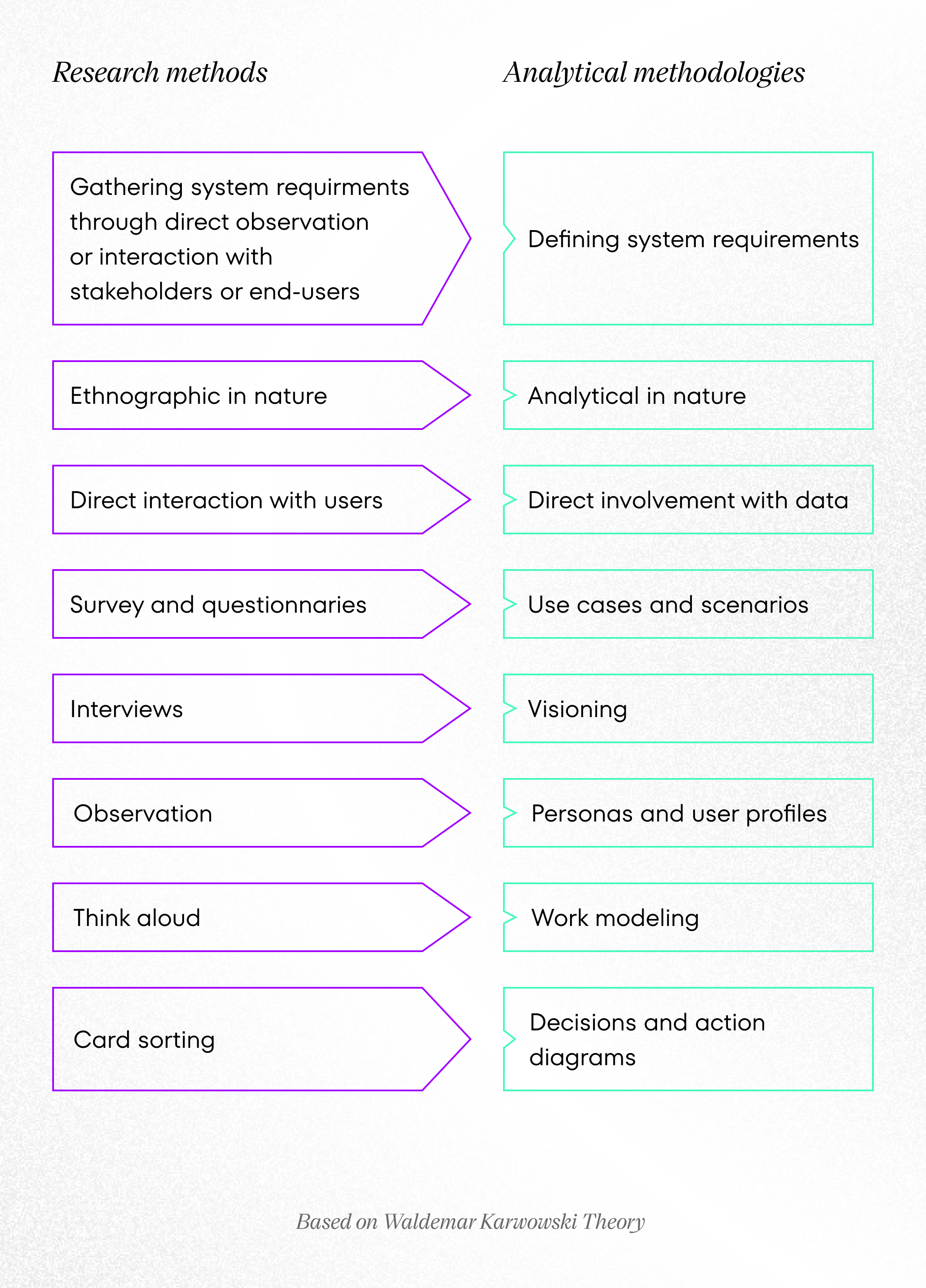April 1st, 2020 | by Martyna Mrozek
How Understanding the User Affects Product Design Process?

Table of contents
Currently, the most crucial word in UX design is empathy and user-centered design (UCD). At every stage of the product development process, designers try to apply the principles of emphatic design to find the real needs, limitations, and willingness of people for whom we are designing – end-users. You can read more about the described process in the article “The UX Design Strategy in the Software Development Process“. In this article, I will define what user-centered design is and why it is worth using this methodology during the process of collecting system requirements for digital product design.
What is user-centered design?
User-centered design, according to the main usability propagator – NN Group, is an approach to the iterative design process, in which designers focus on the users and their needs in each phase of the design process. UCD calls for involving users throughout the design process via a variety of research and design techniques so as to create highly usable and accessible products for them. The concept of user-centered design by Donald Norman is to place the end-user at the center of the design process.
UCD can be categorized as a multidimensional problem-solving process. First, it involves designers to analyze and envision the way users are likely to use the designed product. Then it enables them to validate user expectations regarding their behavior in real-world usability tests. It starts with product requirements, goes through prototyping models, and the implementation of assumptions from the research phase. Certainly considering that the user is in the spotlight during the development phase.
The philosophy of user-centered design states that it is essential to carefully consider who a user is and how to involve them in the design process. Obviously, a user is a person who will use the final product to achieve a task or a goal.
User-centered design is driven by research. Research during the product development process provides an important insight into the expectations, behaviors, and needs of the target audience. On the official website of the ISO 9241-210 standard from 2010 we can read that UCD:
(…) provides requirements and recommendations for Human-Centered Design principles and activities throughout the life cycle of computer-based interactive systems. It is intended to be used by those managing design processes and is concerned with ways in which both hardware and software components of interactive systems can enhance human–system interaction.
User-centered design principles
Based on that ISO standard, we can describe 6 key user-centered design principles which ensure that a design process focuses on users:
- The design is based upon an explicit understanding of users, tasks, and environments.
- Users are involved throughout the design and development process.
- The design is driven and refined by user-centered evaluation.
- The process is iterative.
- The design addresses the whole user experience.
- The design team includes multidisciplinary skills and perspectives.
User-centered design process
The user-centered design process can be depicted as a complex, iterative process with two important phases involving the users – the process of understanding the work system, which is used to define the needs and develop design solutions, and the testing and evaluation of the formulated design solutions.
In this article, I want to show you methods for gathering user information in the initial phase of the user-centered design process. Where the users, their needs, and their work will be examined in order to develop an understanding of the goals and requirements to be met by the designed digital product. The main purpose of this phase is to minimize problems resulting from a costly and destructive misunderstanding between stakeholders, users, and the design and development team. It’s essential to provide a good understanding of the system to be developed to provide communication between users and the D&D team. It will help to minimize risk and maximize acceptance through proper system structuring, explicit language, and direct user involvement.
In the user-centered design initial phase, there are two goals:
1. Specify the context of use, which means recognizing the people who will use the product, what will they use it for, and under what circumstances.
2. Definition and development of system requirements, which are important for creating and developing potential alternative design solutions. This potential design alternatives (i.e. prototypes) must be finally tested and evaluated by users, what is the general concept of the UCD process.


What are the requirements?
Requirements are generally described as descriptions or statements of system services, functions, properties, attributes, or constraints, typically detailing how a system should behave within its context of use to help perform work. There is usually a mixture of some problem information and statements of system behaviour and properties and design. – Waldemar Karwowski
User-centered design workshop with end-users
A user-centered design workshop is a hands-on, activity-based session built around the UCD process. It can last two hours, two days, or even a full week—it all depends on the context and the goals at hand.
1. Brainstorming
The collective generation of creative design ideas by design and task experts use for the initial plan when a little information is available.
2. Parallel design
Groups separately generate design solutions to the same problem to give more variety to the solutions are considered.
3. Design patterns analysis
Review of design guides in the generation of design alternatives.
4. Affinity diagrams
Technique with use sticky notes – organization of views or functions from the user’s perspective.
5. Card sorting
It is a research technique in which study participants group individual labels written on notecards according to criteria that makes sense to them. This method uncovers how the target audience’s domain knowledge is structured, and it serves to create an information architecture that matches users’ expectations.
6. Paper prototyping
Paper-based simulation of the interface for evaluation with users. Read the “Why Low-Fidelity Prototype Matters?” if you would like to know more.
7. Digital simulation
Realistic simulation of the interface and motion made in prototyping tool during the workshop.
Read more: User Interface Design Fundamentals – Part 1
Gathering requirements and analyzing model techniques methods
The infographic shows the correlations between the research methods used during the workshop with users and the analytical methodology that is used to create requirements and design.


Summary
- User-centered design is an iterative design process in which designers focus on the users and their needs in each phase of the digital product design process. The concept places the end-user at the center of the design process.
- User-centered design is driven by research. Research during the development process provides an important insight into the expectations, behaviors, and needs of the target audience.
- In the UCD initial phase there are two goals: specify the context of use and definition and development of system requirements.


